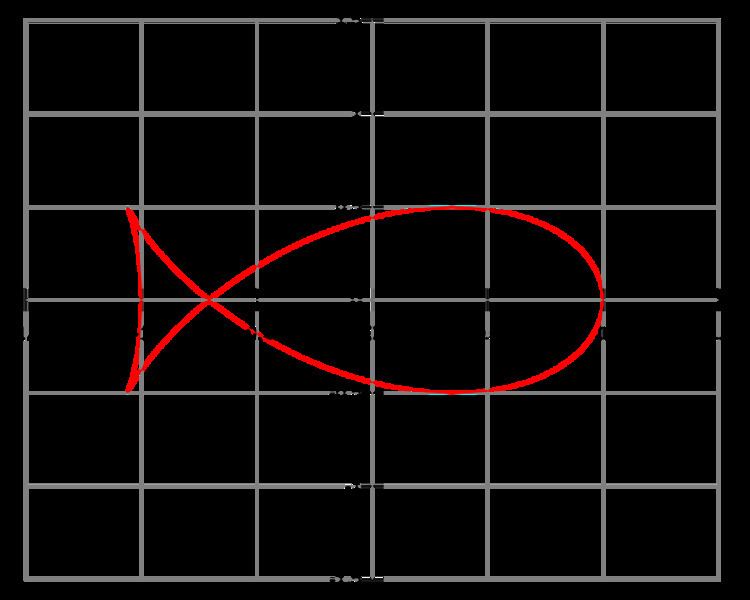 | ||
A fish curve is an ellipse negative pedal curve that is shaped like a fish. In a fish curve, the pedal point is at the focus for the special case of the eccentricity
Contents
Equations
the corresponding fish curve has parametric equations:
For an ellipse with the parametric equations:
and the Cartesian equation is:
which, when the origin is translated to the node, can be written as:
Area
The area of a fish curve is given by:
so the area of the tail and head are given by:
giving the overall area for the fish as:
Curvature, arc length, and tangential angle
The arc length of the curve is given by
The curvature of a fish curve is given by:
and the tangential angle is given by:
where
Conversion from two parametric equations to a single equation
Converting a set of parametric equations involves eliminating the variable t from the simultaneous equations
Usefulness
The fish curve itself may not have any known applications to physical systems, but parametric equations in general do. Using parametric equations to express curves is practical as well as efficient; for example, one can integrate and differentiate such curves termwise. In general, a parametric curve is a function of one independent parameter, which is usually represented by t, while the symbols u and v are commonly used for parametric equations in two parameters.
